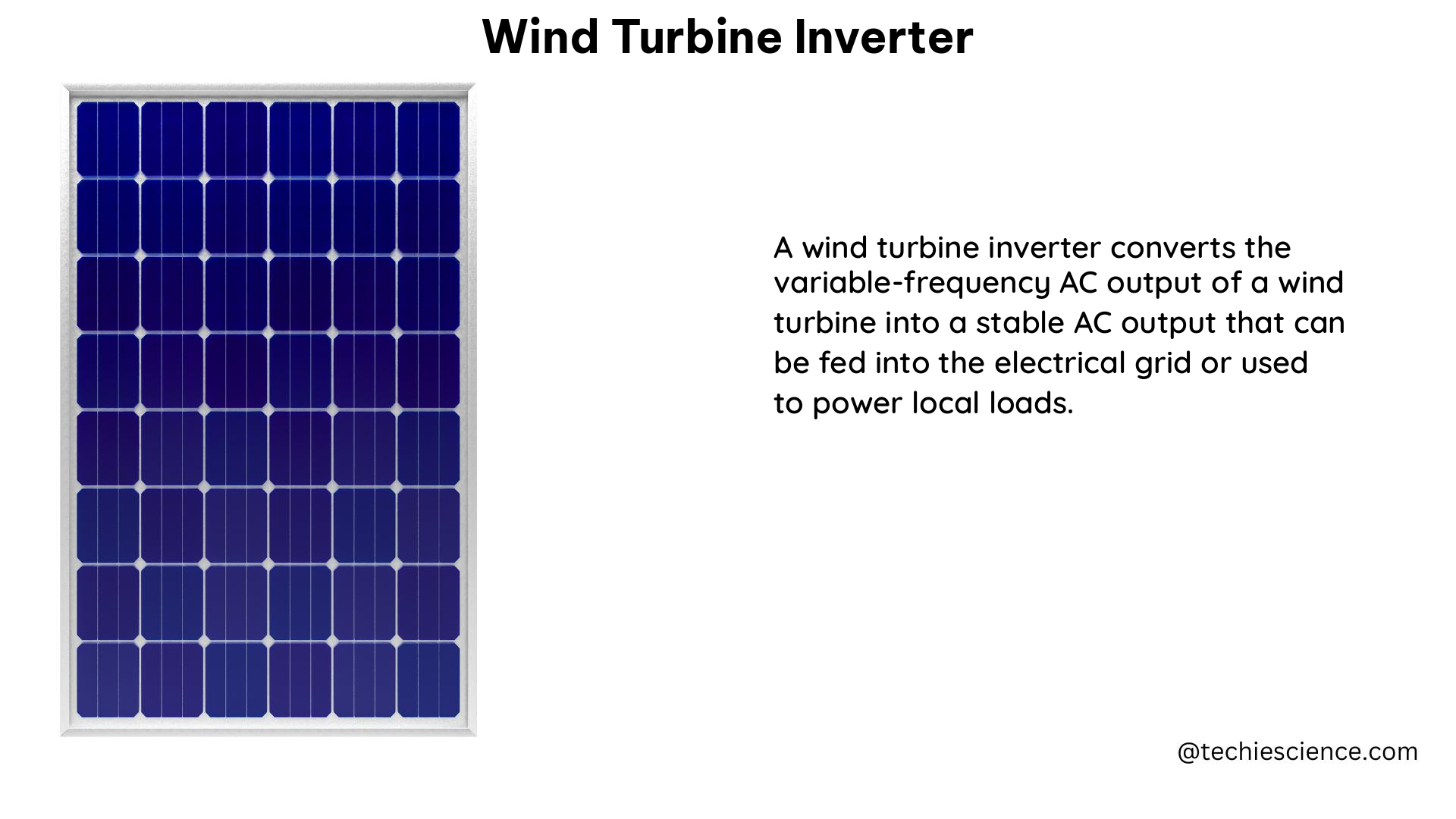Wind turbine inverters play a crucial role in converting the variable direct current (DC) output from the wind turbine generator into alternating current (AC) that can be fed into the power grid. These inverters are the heart of any wind energy system, ensuring the efficient and reliable transformation of renewable wind power into a usable form for the electrical grid.
Efficiency: Maximizing Power Conversion
The efficiency of a wind turbine inverter is a critical metric, as it directly impacts the overall performance and energy yield of the wind turbine system. Typically, the efficiency of a wind turbine inverter ranges from 95% to 98%, meaning that for every 100 watts of DC power input, the inverter can produce 95 to 98 watts of AC power output. This high efficiency is achieved through advanced power electronics and control algorithms that minimize energy losses during the conversion process.
Power Rating: Matching the Turbine’s Capacity

Wind turbine inverters are designed with specific power ratings that correspond to the capacity of the wind turbine they are paired with. For example, a 500-watt wind turbine would require a 500-watt inverter or one with a larger rating to ensure the efficient and safe conversion of the turbine’s output. Selecting the appropriate power rating is crucial to avoid overloading the inverter, which can lead to reduced performance, decreased lifespan, or even equipment failure.
Input Voltage and Current: Accommodating Generator Characteristics
The input voltage and current of a wind turbine inverter depend on the specific generator used in the turbine. Permanent magnet generators, for instance, typically produce a DC voltage ranging from 200 to 400 volts, while induction generators may generate a lower voltage of 48 to 72 volts. Inverters must be designed to handle the specific input characteristics of the wind turbine’s generator to ensure efficient and reliable power conversion.
Output Voltage and Frequency: Matching Grid Specifications
The output voltage and frequency of a wind turbine inverter must be compatible with the power grid to which it is connected. In North America, the typical output voltage is 120 or 240 volts AC at a frequency of 60 Hz. Inverters must be able to precisely regulate the output voltage and frequency to meet the grid’s requirements, ensuring seamless integration and preventing any disruptions to the power supply.
Harmonic Distortion: Maintaining Power Quality
Wind turbine inverters can introduce harmonic distortion into the power they supply to the grid, which can affect the overall power quality. Harmonic distortion is typically measured in terms of total harmonic distortion (THD), and it should be kept below 5% for most applications to maintain the integrity of the grid’s power supply.
Start-Up Voltage: Initiating the Conversion Process
The start-up voltage of a wind turbine inverter is the minimum voltage required to initiate the conversion of DC power to AC power. This voltage is typically in the range of 50 to 100 volts, ensuring that the inverter can begin operating even at relatively low wind speeds and generator output levels.
Protection Features: Safeguarding the System
Wind turbine inverters are equipped with various protection features to safeguard the inverter and the power grid from potential damage. These features include:
- Overvoltage Protection: Protects the inverter and the grid from excessive voltage levels that could cause equipment failure or grid instability.
- Undervoltage Protection: Prevents the inverter from operating at voltages that are too low, which could lead to system shutdown or damage.
- Overcurrent Protection: Limits the amount of current that the inverter can draw, preventing overloads and short circuits.
- Short-Circuit Protection: Quickly disconnects the inverter from the grid in the event of a short circuit, preventing further damage.
These protection features are essential for ensuring the reliable and safe operation of wind turbine systems, minimizing the risk of equipment failure or grid disruptions.
Conclusion
Wind turbine inverters are the critical link between the renewable energy generated by wind turbines and the electrical grid. By understanding the key technical specifications and performance characteristics of these inverters, wind energy system designers, installers, and operators can ensure the efficient, reliable, and grid-compatible conversion of wind power into usable electricity. This comprehensive guide has provided a detailed overview of the essential aspects of wind turbine inverters, empowering you with the knowledge to make informed decisions and optimize the performance of your wind energy system.
References:
- Performance and Reliability of Wind Turbines: A Review
- Wind Turbine Inverter Systems: Design, Control, and Grid Integration
- Design and Control of Wind Turbine Inverters for Grid Connected Applications

The lambdageeks.com Core SME Team is a group of experienced subject matter experts from diverse scientific and technical fields including Physics, Chemistry, Technology,Electronics & Electrical Engineering, Automotive, Mechanical Engineering. Our team collaborates to create high-quality, well-researched articles on a wide range of science and technology topics for the lambdageeks.com website.
All Our Senior SME are having more than 7 Years of experience in the respective fields . They are either Working Industry Professionals or assocaited With different Universities. Refer Our Authors Page to get to know About our Core SMEs.